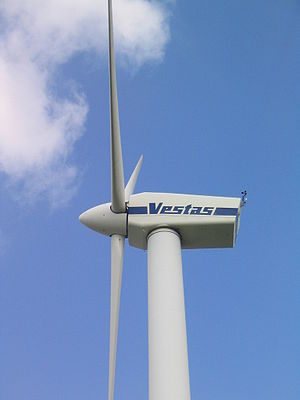Climate concerns, rising utility costs, better technology, and new laws are making home units more attractive.
On a recent sunny afternoon Bob Loebelenz pauses to gaze 72 feet into the air at the spinning blades of his wind turbine, a small “clean, free electricity” smile creasing the corners of his mouth.
While giant wind turbines that supply power to utilities sprout along ridgelines across the United States, far smaller residential wind generators, like the one Mr. Loebelenz erected in 2003 to power his suburban Boston home, are still unusual in densely populated places.
That may be changing. Across the country signs are growing that “small wind” (a category that includes wind generators geared to supply a single home) is catching on in suburban and even urban settings.
“My phone has been ringing off the hook,” says Mark Durrenberger, president and founder of New England Breeze, a Hudson, Mass., wind and solar power installer.
Improved generator technology, more financial incentives, rising electric rates, and energy-security concerns have opened the way for small-wind power to bloom in unlikely places.
“Small wind really seems to be taking off for residential, small business, and farm use,” says Trudy Forsyth, leader of the distributed wind program at the National Renewable Energy Laboratory in Golden, Colo.
The installed capacity of “on grid” small-wind residential generators has almost tripled, from 1,300 kilowatts nationwide in 2006 to 3,000 kilowatts last year, says the American Wind Energy Association (AWEA), a Washington-based trade organization. The number of residential installations rose from 400 to 1,200 units in the same period.
Supplying that tiny but red-hot market are dozens of new companies that have popped up since 2000. Though a half-dozen companies dominate the market, AWEA tracks about 45 US manufacturers. With demand strong overseas, too, the US is the world leader in small-wind power, exporting more than half of what it sells.
“The growth we’re now seeing in small-wind residential in the US is impressive,” says Ron Stimmel, who tracks the small-wind market for AWEA. “Advanced technology and electronics have made these units more reliable, and more states are now offering incentives to build them.”
At least 26 states have tax or productivity incentives or other subsidies to support wind energy, Ms. Forsyth says. But strong growth is happening even without the federal tax incentives enjoyed by solar panels and big utility-scale wind turbines, she notes.
Countervailing breezes are blowing.
Bookmark this page for “small wind power plants” and check back regularly as these articles update on a very frequent basis. The view is set to “news”. Try clicking on “video” and “2” for more articles.








